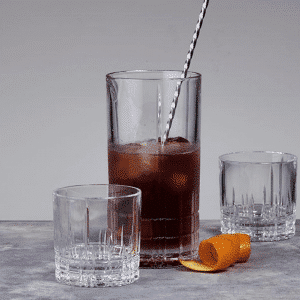June 28, 2024 7:08 pm
trong trong
To celebrate World Cocktail Day, our great mate Phillip Jones aka the Martini Whisperer is taking over the Gintoncia page to give us the 101 on cocktail mixers….and we aren’t taking tonic or soda.

The unsung heroes of any cocktail are the actual vessels used to make them.
The very notion of a ‘cocktail’ seems to go back to antiquity with the clever idea of putting various ingredients into a vessel and either giving it a shake, or a stir, and voila, you’ve got yourself a cocktail. Sort of.
In this article, I’ll share with you some of my own collection and what I find they’re good for as a way to introduce you to the various styles of mixers.
So without further ado, let’s dive in.
Boston Shaker
- This is a two piece that can come in either both stainless steel parts, or a mix of glass/ Pyrex and stainless steel and is very common in bars. They like it because it’s stackable, usually unbreakable, easy to clean and to use. Ingredients are added to one part, often the clear part to see what’s what, ice added, and then joined together with a wack to make the seal for shaking.
- Some home bar folks tend to steer clear of it, as it can be a little tricky at first to master the seal and to open it again, plus you need a strainer at times, unless you can master the knack of opening it slightly and pour from the middle of the two parts, retaining the ice in the vessel. It’s been around in it’s current form for quite a while, and may have been named after the Boston Lighthouse way back in the 1850’s or thereabouts.
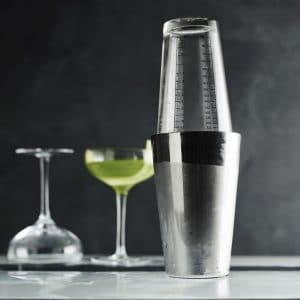
Cobbler Shaker
- Very early in the cocktail piece, someone had the bright idea of including a strainer in the mixer, an evolution of the Boston perhaps. We can certainly locate it’s patent though, a certain Edward Hauck of Brooklyn, registered a patent for a three-piece shaker in 1884 with a built-in strainer.
- They may come all metal, and glass and metal as pictured above. This unit pictured above is one of my favourites, and dates from about 1930 or earlier. It’s quite small, but enough for one Martini and I take with me in a travel kit whenever I’m on the road, with suitable ingredients and small glasses, just in case. I usually stir, as you probably now, my Martinis, but in emergencies, when I require this tool, a quick shake will suffice! See pic at bottom fyi…
- The Cobbler is also well established in fine Japanese cocktail bars, and they have introduced to the world, the notion of a “hard shake” where the ingredients are added to the mixer, sans ice, then shaken vigorously to blend them, ice is added later, sometimes even then added to a mixer with ice, stirred and poured.
- The technique is very particular, and this gentleman, Kazuo Uyeda, is credited by some for creating it. You can watch a short clip of him in action here.
- Note, shaking usually only takes place when there is a juice or cream ingredient in the cocktail.
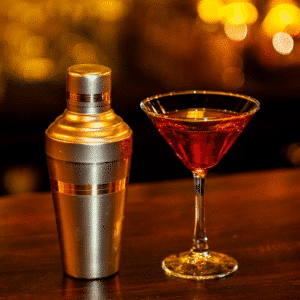
Cocktail Jug
- Back in the day, and we’re talking Victorian era and earlier, and well in the 1930’s and onwards, it was also the custom of mixing cocktails en masse in a jug. It might be made of silver, pewter, or later, glass, or a combination of those for the fancy types. The idea was simply that you poured your ingredients from the bottles into this, add some ice and disco! The host would pour out the libations at cocktail hour and at the time the glasses were usually smaller, so constant top ups were required.
- This particular example was gifted to me from my friends in far away New Mexico, Santa Fe Antiques when I had the pleasure of dropping in a few years back. It holds a couple of litres and has a strainer in the nozzle, with a cap you can unscrew. I’ve used it for both personal and functions and tend to chill it in the fridge first before using.
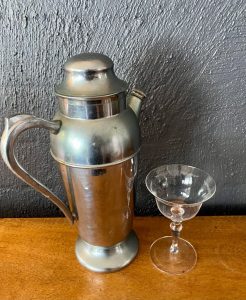
Design Variations
- I also have a few special sets that illustrate the design potential of a set of simple elements. The first image is an original set from the mid 1960’s by iconic Danish designer, Arne Jacobson. You’ll note the strainer is integrated in the lid, so it sits flat on top of the vessel, with a slot for the bar spoon, so this is for mixing, not for shaking obviously. It took me a while to get used to the spoon in regards to my stirring technique compared to the usual Japanese bar spoon I use. The angle of the spoon is different, but the hole makes for a motion that enables it to pass through the liquid easier. It holds about a litre and is a classic of it’s time.
- The second image is a modern expression by Georg Jensen that I just had to have, being so uber sleek and beautiful. A Cobbler style, that can also be used as a mixer with it’s own spoon. Divine to handle.


Mixing Glass
- Finally, the classic mixing glass, of which I have several of various sizes. I always keep my daily mixer in the fridge to facilitate the chilling of my Martinis (glasses too, and gin in the freezer).
- The advantage of the mixing glass over a shaker in the Martini context is two fold: you can see the ratios of your ingredients by colour in the glass, and you have more control by stirring of the temperature and dilution of the cocktail. Which you can’t do by shaking, plus you run the risk of getting flakes of ice in the cocktail if you shaking, and some cloudiness – never appealing in my humble opinion.
- If you want to see a master in action, we’ll head back to Japan, the legendary Takeo Mori and his silky smooth technique is something I aspire to, watch this short clip here.
If the Martini Whisperer has inspired you to try your hand at cocktail making Gintonica can help you get there.
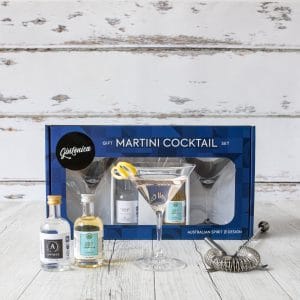
Shop Glassware and cocktail accessories


